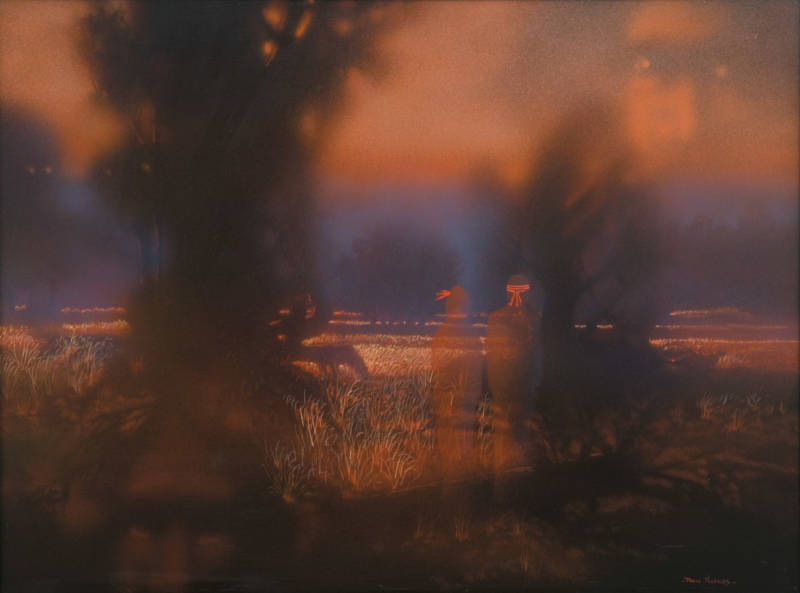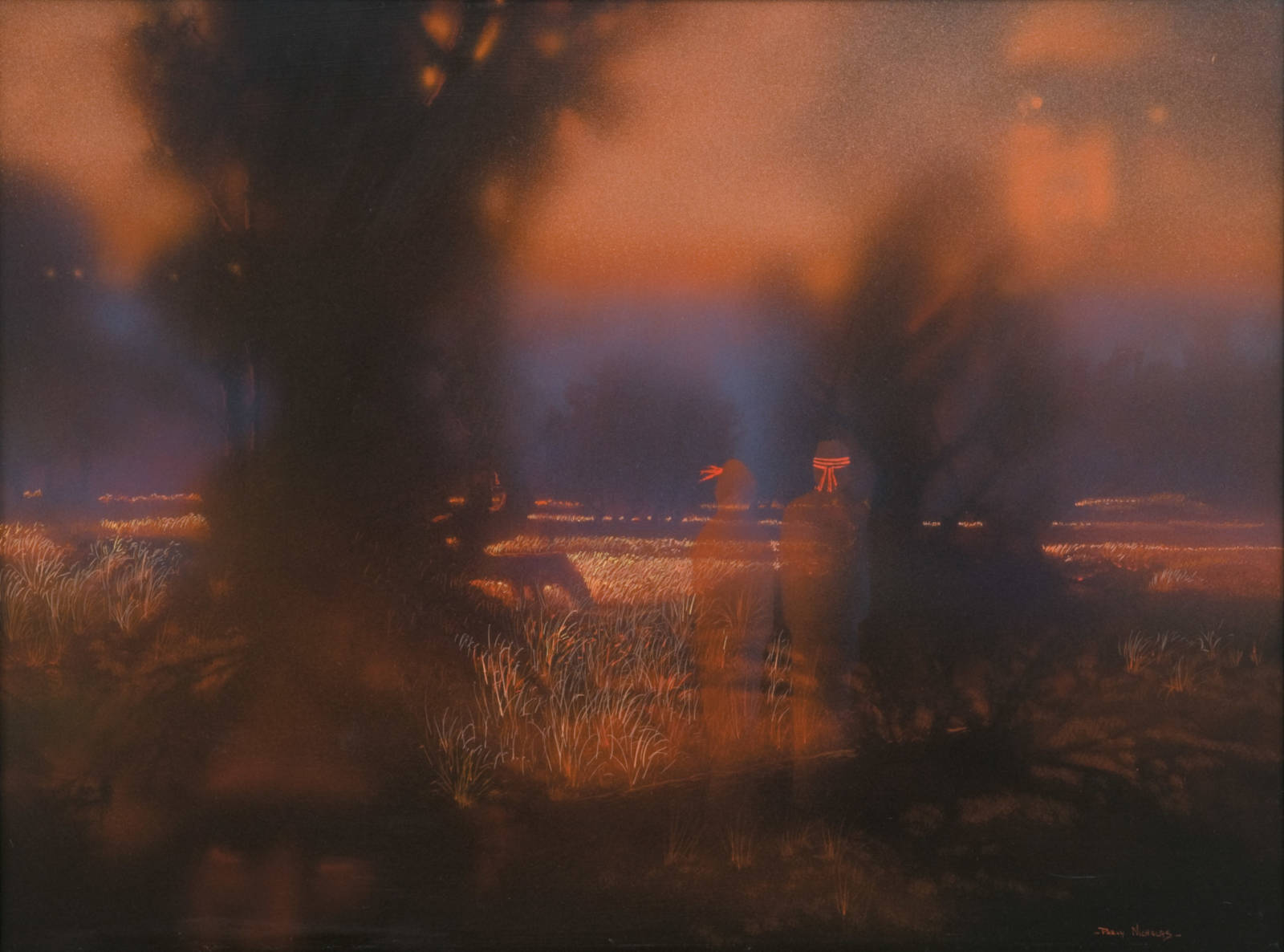NICHOLAS, Darcy;
Children of Tāne
1985
Oil and acrylic on board
730 x 990mm (image); 750 x 1010mm (frame)

The following two texts were written for Te Huringa/Turning Points and reflect the curatorial approach taken for that exhibition.
Peter Shaw
The artist has written that the subject of Children of Tāne is ‘the loss of our native forests and, subsequently, our stories about those special places’.
Darcy Nicholas was born and raised in Waitara, Taranaki. As a child he played in the forest called Te Kotuku. This forest was named after an ancient Kāhui Maunga tohunga. When he died, Te Kotuku’s spirit departed to the south, in the form of a large cloud. The forest had been confiscated in 1877 as part of the post-Parihaka seizure of ancestral Māori land. When it was cleared in the 1960s, the forest of Te Kotuku ceased to exist.
Nicholas is a painter, sculptor, writer, and arts administrator. In 1984, he received a Fulbright Scholarship to observe contemporary Native American and African-American art in the United States. He has exhibited in several countries and his work is held in many private and public collections. From 1973 to 1980, he was a full-time painter. Thereafter, he held various senior management positions. He was General Manager for Cultural Services for Porirua City Council and a driving force behind the creation of Pātaka Museum of Arts & Cultures (later Pātaka Art + Museum).
Jo Diamond
This painting has the instantly recognisable artistic signature of Darcy Nicholas, with its distinctive palette and ‘washed’ paint effect providing an ethereal quality. The mountain Taranaki, a distinctive feature of Nicholas’s other works, is absent, suggesting that the artist’s concern reaches beyond his own rohe towards a collective identification with wairua (spirit), rather than that of a particular individual iwi or person. The smudged effect of the painting attests to the holistic nature of Māori ways of seeing the world. Equally, the boundaries we set between deities and ancestors are also blurred, in keeping with a Māori convention that venerates both.
The painting provides a rich opportunity for multiple interpretations. The implied presence of a human face in the top right corner not only seems connected to the sky and earth but also to the indistinct figures in the foreground and another ‘half-face’ at the bottom left of the painting. The figures comprise two human and two tree-like forms; each is a ‘child of Tāne’, symbolising a variety of kindred relationships between human beings, land, sky and earth. The half-face mirrors the other face at top right, and appears to share a deified role. Maybe these are Rangi and Papa, long since separated by their recalcitrant son Tāne.
This cosmological reference sharply contrasts with another ‘truth’: the exploitative role human beings have aggressively asserted over their land. An ecological concern is overlaid with symbolic reference to the cosmology that preceded Christianity in Aotearoa. It is a concern that by definition places our survival in the hands of the gods and our responsibility for a pro-active stance against environmental destruction squarely at our feet. Māori cosmology provides ample guidance for a sustainable life, now and in the future.
Inscriptions
–Darcy Nicholas– [l.r.] CHILDREN OF TANE / –NICHOLAS– [verso]Exhibition History
Face Time: Portraits from the 1980s, curated by Milly Mitchell-Anyon, New Zealand Portrait Gallery Te Pūkenga Whakaata, Te Whanganui-a-Tara, 25 November 2021 to 13 February 2022
Te Huringa/Turning Points: Pākehā Colonisation and Māori Empowerment, Sarjeant Gallery Te Whare o Rehua, Whanganui, 8 April to 16 July 2006 (toured)
Provenance
1985–
Fletcher Trust Collection, purchased from Galerie Legard, November 1985

